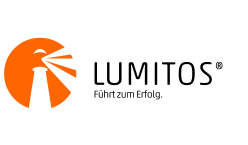Um alle Funktionen dieser Seite zu nutzen, aktivieren Sie bitte die Cookies in Ihrem Browser.
my.chemie.de
Mit einem my.chemie.de-Account haben Sie immer alles im Überblick - und können sich Ihre eigene Website und Ihren individuellen Newsletter konfigurieren.
- Meine Merkliste
- Meine gespeicherte Suche
- Meine gespeicherten Themen
- Meine Newsletter
6 Infografiken von compound-interest
rssCarothers, Condensation Polymerisation, & Nylon
On this day in 1896, Wallace Carothers was born. Listed by C&EN magazine intheir recent list of scientists who should have won a Nobel prize, we have Carothers to thank for nylon, which can be used in clothing, carpets, car parts and more. Here’s a quick look at the chemistry behind the ...
Over the weekend, the news of Sir Harry Kroto’s passing filtered slowly through the internet. Perhaps the best summary of hislife and achievements was alreadywritten by Kroto himself, so here we take a brief look at his most acclaimed discovery: that of the amusingly named form of carbon, ...
There are an isolated few graphics online that look at elements involved in the manufacture of a smartphone – for example, this ‘Periodic Table of iPhones’ – but there’s actually remarkably little easily accessible information out there that details the specific compounds used for specific ...
The Carbon-Based ‘Wonder Material’
You may not have beenaware, but this week is Graphene Week 2015, which marks a yearly week-long conference at the University of Manchester based around the emerging science and technological applications of graphene. This seemed as good a time as any to take a look at graphene: what it is, why ...
The Chemistry of Paint
The latest in the Colourful Chemistry series looks at the inorganic compounds that give many paints their colours. This shows a limited selection of the most common compounds, and there are many others; there are also a large range of organic based pigments, which aren’t discussed ...
Element Infographics
This latest infographic focuses on the Group 4 elements. One extra fact to add for the curious: although tin has the greatest number of stable isotopes, Xenon trumps it comprehensively if unstable isotopes are also included in the count, with well over 30 possible isotopes.
Sie erhalten passend zu Ihrer Suche die neusten Suchergebnisse per E-Mail. Dieser Service ist für Sie kostenlos und kann jederzeit abbestellt werden.









